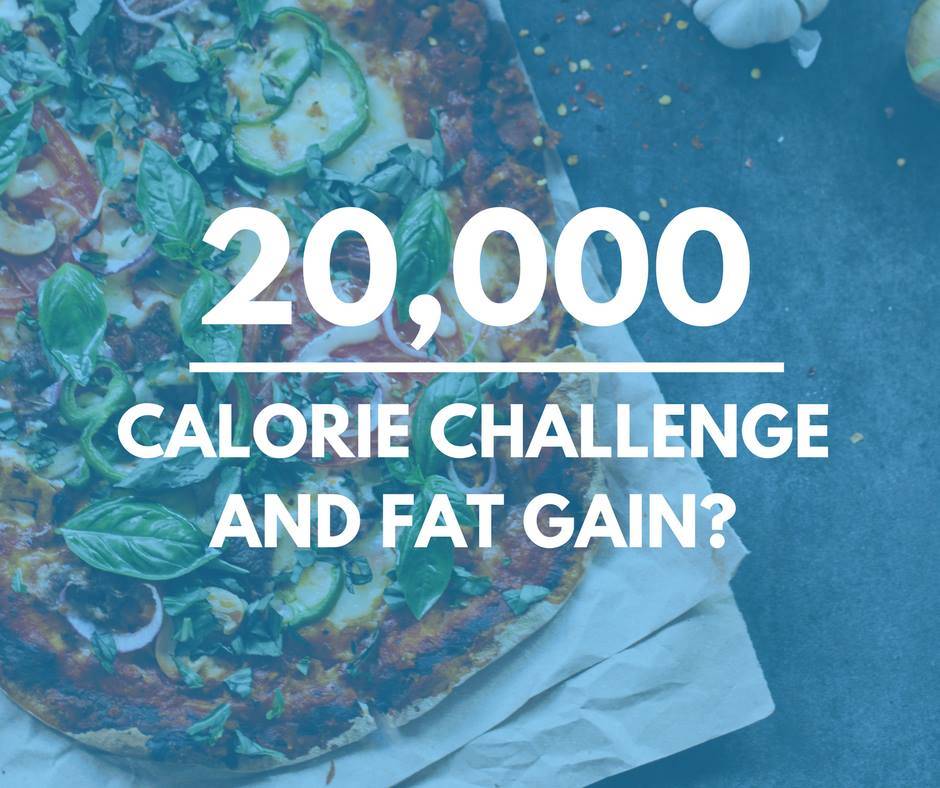If it’s all just “Calories In, Calories Out”, then why don’t fitness influencers get fat when they do 10,000/20,000 Calorie challenges?
Before we get into the topic of a Calorie challenge, please note that we are not promoting binge eating. It can be easy to walk away from this thinking “I can binge like crazy and get away with it”, but that is not the case. Rather, this post is intended to reinforce that energy [un]balance really is the driving factor of changes in fat mass/weight. You can learn more about effectively setting up a diet here.
The problem with people that reject the Calories In, Calories Out (CICO) model of body weight regulation is that they completely misinterpret it. I have argued this point with some very intelligent coaches, who are just unable to view things holistically, and instead, focus on the points that confirm their bias. The point most often interpreted is that people fail to recognise that CICO is a dynamic relationship.
Firstly, understand that “Calories Out” (energy expenditure or TDEE) is composed of the following:
BMR: Basal metabolic rate – Basic energy requirements for the maintenance of life (liver, lung, heart, brain etc.).
TEF: Thermic effect of feeding – Amount of energy required for the actual process of digestion.
EAT: Exercise activity thermogenesis – Energy used for exercise-specific activity (your training).
SPA/NEAT: Spontaneous physical activity OR non-exercise activity thermogenesis – These definitions are intertwined because NEAT has quite a loose definition. You can consider this component to be the activity you don’t consider to be exercise, including fidgeting, tapping your feet, hoovering, walking etc.
Calorie Challenge Reality
With that in mind, let’s look at what goes on in the case of extreme, acute overfeeding. The thing is, I know so many people who have done these challenges, and ALL of them diet for the week before and the days after. If you think about how this plays out;
- People typically reduce calories to somewhere around a 500-1000 calorie deficit leading up to these challenges for a week or so.
- People typically add cardio in, which could account for an additional ~1000 calories in this week.
So far, that’s an average of 5000-7000 calories accounted for.
- We’ve then got 10% TEF, adding another 1000-2000 calories (depending on whether it’s a 10,000 or 20,000 calorie challenge) accounted for.
- We then consider the fact that the overfeeding will likely drive an increase in NEAT that could account for further expenditure thereafter (which is most certainly one of the up-regulations one would see in response to overfeeding).
- Training volume on the day (and the day after) is also likely to be increased much higher, which has been reported by the majority of people who have completed these challenges. Let’s consider this to be an extra ~500 calories of expenditure
- So, we are probably looking at a surplus of ~6500-7000 calories (for a 20,000 calorie challenge).
This would account for just under 2lbs of fat, which is what the people often report in response to these overfeeding episodes.
Extra weight could be added initially through water retention, which is why you typically see people dropping weight again pretty fast the days/week after.
However, this all assumes that you are actually able to digest and assimilate all of that food, which is rarely actually the case. A vast majority of it will simply pass through the digestive tract and not actually be assimilated. The digestive system is like a tube that runs through your body and it is only so effective. If you put too much stuff down the tube, it will pass through the other side without being fully digested or absorbed into the body.
It obviously doesn’t always play out like that, but it is important to recognise that they are implementing damage control strategies to facilitate the overeating. Even if we do consider the weight gain implications, the most you’ll see gained will be 1-2lbs of fat, depending on the magnitude of the net surplus. 3500 calories tends to be a very rough estimation of the energy content of 1lb of fat, therefore that’s the net surplus one would need to accumulate.
It’s definitely not something we would recommend, however, especially if someone is susceptible to regular binge behaviour. But, what this should do is reinforce your confidence in the CICO model of weight regulation!

Paddy Farrell
Hey, I'm Paddy!
I am a coach who loves to help people master their health and fitness. I am a personal trainer, strength and conditioning coach, and I have a degree in Biochemistry and Biomolecular Science. I have been coaching people for over 10 years now.
When I grew up, you couldn't find great health and fitness information, and you still can't really. So my content aims to solve that!
I enjoy training in the gym, doing martial arts and hiking in the mountains (around Europe, mainly). I am also an avid reader of history, politics and science. When I am not in the mountains, exercising or reading, you will likely find me in a museum.


